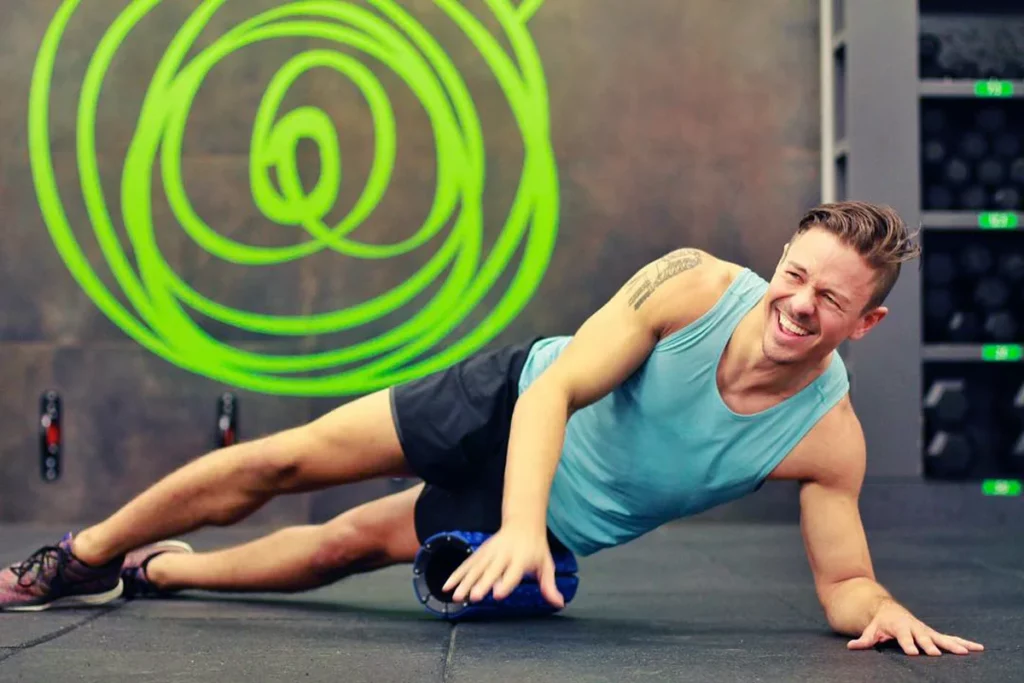Ahh, post-workout soreness. We love that “I-just-crushed-it” feeling that comes after pushing ourselves to the limit during a workout, but what we don’t love is that feeling holding us back over the next day or two. One way to combat the latter feeling is with foam rolling. Foam rolling serves your muscles more than static stretching; it can help your muscles recover quicker and allow you to get back in the game sooner. Think of sore muscles as a rope with a knot in it; stretching the rope could make the knot tighter, but rolling can release it.
Some quick basics: What does foam rolling do? Foam rolling is a means of achieving Self-Myofascial-Release. Let’s break down that term. Myo is a prefix for anything muscle-related and fascia is the tissue that connects with muscles, bones and ligaments to provide support. Self-Myofascial-Release is assisting your own muscles and fascia tissue in loosening up. Specifically, you’re releasing knots and trigger points in your fascia that harness and cause most of the pain you’re feeling. This promotes better blood-circulation and therefore quicker recovery. When you roll, do it very slowly, and hold steady in spots that are the most uncomfortable. We know it hurts, but you’re releasing tension and will feel better when you’re done.

Below are some tips from FHITpro, Ben Wegman, along with his favorite ways to roll it out.
1. When foam rolling before a workout, hit the areas that are the most sore and fatigued. Personally, I always love to roll out my back and lay over the roller to open up my spine. Listen to your body and be especially careful with your lower back.
2. The slower the better! Move in a controlled, fluid motion. You are seeking to release tension and tightness. Once you find those “sweet spots,” hang out and roll there for a while. Recognize which spots are commonly tight in your body, and start rolling them more regularly in the future.
3. Post-workout rolling should be determined by the workout you just completed, but I always love to roll out my hamstrings, quads and calves after a workout. Foam rolling your hip flexors can help with mobility and runners can roll their lateral quad muscle to release tension on the IT band.
4. Everyone should be foam rolling more often! I do it while watching T.V. after I’ve taken a hot shower.
Foam rolling can relieve your entire body. Here are four of Ben’s favorite ways to roll it out.
Upper to Mid Back: Lying on your back, place the foam roller underneath your upper back horizontally so it reaches from shoulder to shoulder. Raise your hips and gradually bend and straighten your knees to move the foam roller from the top of your back to the middle.
Calf: Seated, place the foam roller under one calf with legs crossed at the ankle. Using your hands, lift yourself up and roll back and forth the length of your calf.
Hamstring: Seated, place the foam roller underneath one hamstring and place the opposite foot on the floor. Using your hands and opposite foot for leverage, roll back and forth the length of your hamstring.
Quadriceps: Lying facedown, place the foam roller underneath one leg, allowing that foot to come off of the ground. Position the opposite leg however feels comfortable. Supporting yourself from your forearms, roll from below the hip to just above the knee.